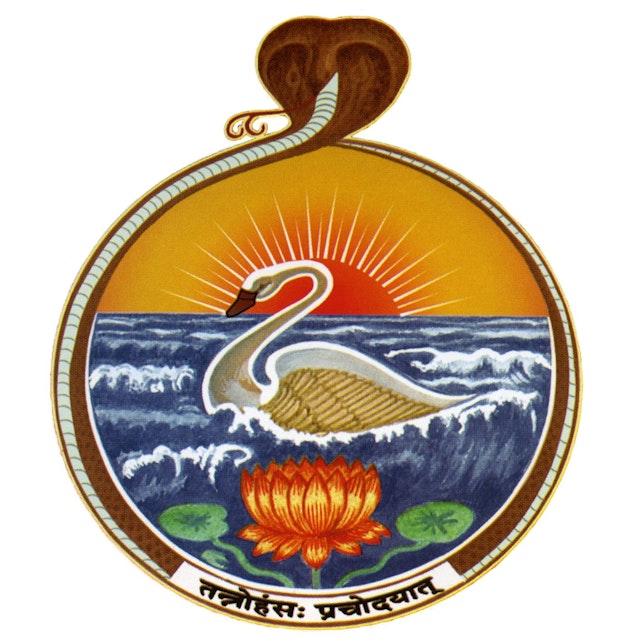Title: Practicing Detachment
13th Chapter: Verses 29, 30, 31, 32; Summary of 2nd chapter
29th verse: “A spiritual person realizes that all actions of the mind and body (thoughts, words and deeds) take place at the superficial or material level. Our true nature is Atman, which is unchanging and actionless. This Atman when joined with samskaras makes us do things.”
30th verse: “A person who understands that the world of plurality that we experience is built upon one single point – he attains the highest realization.”
All experiences that we have are expressions of the same divine spark in innumerable forms. Spirituality expands into the realm of everyday life. In the beginning, there is a line of demarcation between the secular and spiritual. As we evolve, the secular becomes spiritualized – the line of demarcation disappears. Work becomes an act of worship.
We can start our spiritual journey at any moment in life. Karma Yoga is the art of doing all activities from a spiritual perspective. When we begin to do our actions as karma yoga, we board the bus for our spiritual destination. When Buddha saw old age, disease and death, and the serenity of a monk, he began his spiritual journey.
31st verse: “The Atman is beginningless. It neither acts nor is attached.”
In the 18th verse of the 4th chapter, Lord Krishna says: “One who sees inaction in action, and action in inaction, is a Yogi.” He is (1) Buddhiman – wise person, who understands Swadharma (2) Yuktaha – a Yogi (3) Krtsna-Karmakrt – does everything with a smile, unattached.
We should do our actions with full efficiency but stay detached from the results. Then we won’t have anxiety and mental fatigue from worrying about the results.
32nd verse: This verse compares the Atman to space. Space is everywhere but it is not affected by anything. It remains detached but accommodates everything. Similarly, the Atman is present everywhere but remains unaffected.
Gita begins with an invocation which in summary means: “O’ Mother Gita, I bow down to you who rain down blessings of the nectar of Advaita.”
47th verse of the 2nd chapter says: “You have the right to action, but not to the results thereof. You should not be attached to inaction either.”
Gita presents Swadharma as a way to stay properly active. Swadharma is our natural way of work and that we feel perfect harmony with. When we do our Swadharma, we derive inner contentment.
Swami Trigunatitananda’s was a traveling monk before coming to the US. In 13 years, he built the old temple, shaped the Vedanta Society, built a printing press, preached across the city and inspired people to renounce. All along, he never felt he was doing anything.
Gita ends with the verse: “Wherever the ideals of action and contemplation are present, there will be victory, prosperity, success and stability of life.”
13th Chapter: Verses 29, 30, 31, 32; Summary of 2nd chapter
29th verse: “A spiritual person realizes that all actions of the mind and body (thoughts, words and deeds) take place at the superficial or material level. Our true nature is Atman, which is unchanging and actionless. This Atman when joined with samskaras makes us do things.”
30th verse: “A person who understands that the world of plurality that we experience is built upon one single point – he attains the highest realization.”
All experiences that we have are expressions of the same divine spark in innumerable forms. Spirituality expands into the realm of everyday life. In the beginning, there is a line of demarcation between the secular and spiritual. As we evolve, the secular becomes spiritualized – the line of demarcation disappears. Work becomes an act of worship.
We can start our spiritual journey at any moment in life. Karma Yoga is the art of doing all activities from a spiritual perspective. When we begin to do our actions as karma yoga, we board the bus for our spiritual destination. When Buddha saw old age, disease and death, and the serenity of a monk, he began his spiritual journey.
31st verse: “The Atman is beginningless. It neither acts nor is attached.”
In the 18th verse of the 4th chapter, Lord Krishna says: “One who sees inaction in action, and action in inaction, is a Yogi.” He is (1) Buddhiman – wise person, who understands Swadharma (2) Yuktaha – a Yogi (3) Krtsna-Karmakrt – does everything with a smile, unattached.
We should do our actions with full efficiency but stay detached from the results. Then we won’t have anxiety and mental fatigue from worrying about the results.
32nd verse: This verse compares the Atman to space. Space is everywhere but it is not affected by anything. It remains detached but accommodates everything. Similarly, the Atman is present everywhere but remains unaffected.
Gita begins with an invocation which in summary means: “O’ Mother Gita, I bow down to you who rain down blessings of the nectar of Advaita.”
47th verse of the 2nd chapter says: “You have the right to action, but not to the results thereof. You should not be attached to inaction either.”
Gita presents Swadharma as a way to stay properly active. Swadharma is our natural way of work and that we feel perfect harmony with. When we do our Swadharma, we derive inner contentment.
Swami Trigunatitananda’s was a traveling monk before coming to the US. In 13 years, he built the old temple, shaped the Vedanta Society, built a printing press, preached across the city and inspired people to renounce. All along, he never felt he was doing anything.
Gita ends with the verse: “Wherever the ideals of action and contemplation are present, there will be victory, prosperity, success and stability of life.”
The podcast Bhagavad Gita | The Essence of Vedanta is embedded on this page from an open RSS feed. All files, descriptions, artwork and other metadata from the RSS-feed is the property of the podcast owner and not affiliated with or validated by Podplay.
